Ready Set Can!
This is astep by step post with pictures of how to do the basics of water bath canning. Note: This is not the recipe to process tomatoes. Tomatoes need acidity for canning and these pint jars would need 1 T. of bottled lemon juice in each jar for them to be safely canned.
Thispost will show you the tools you will need, the preparation of the equipmentand your canning area, and finally how to process a recipe using canning tomatoes asthe example. Some of the pictures are graciously donated by Bob Wint and his wife Rose, aspart of one of their big projects. Thank you Bob for your contribution.
Tools
There area few items you need to start canning. Each of them has a specific purpose andthere are other tools that you can use that you may have in your drawers athome.
Jar Tongs/Lifter – LiftingJars from hot water
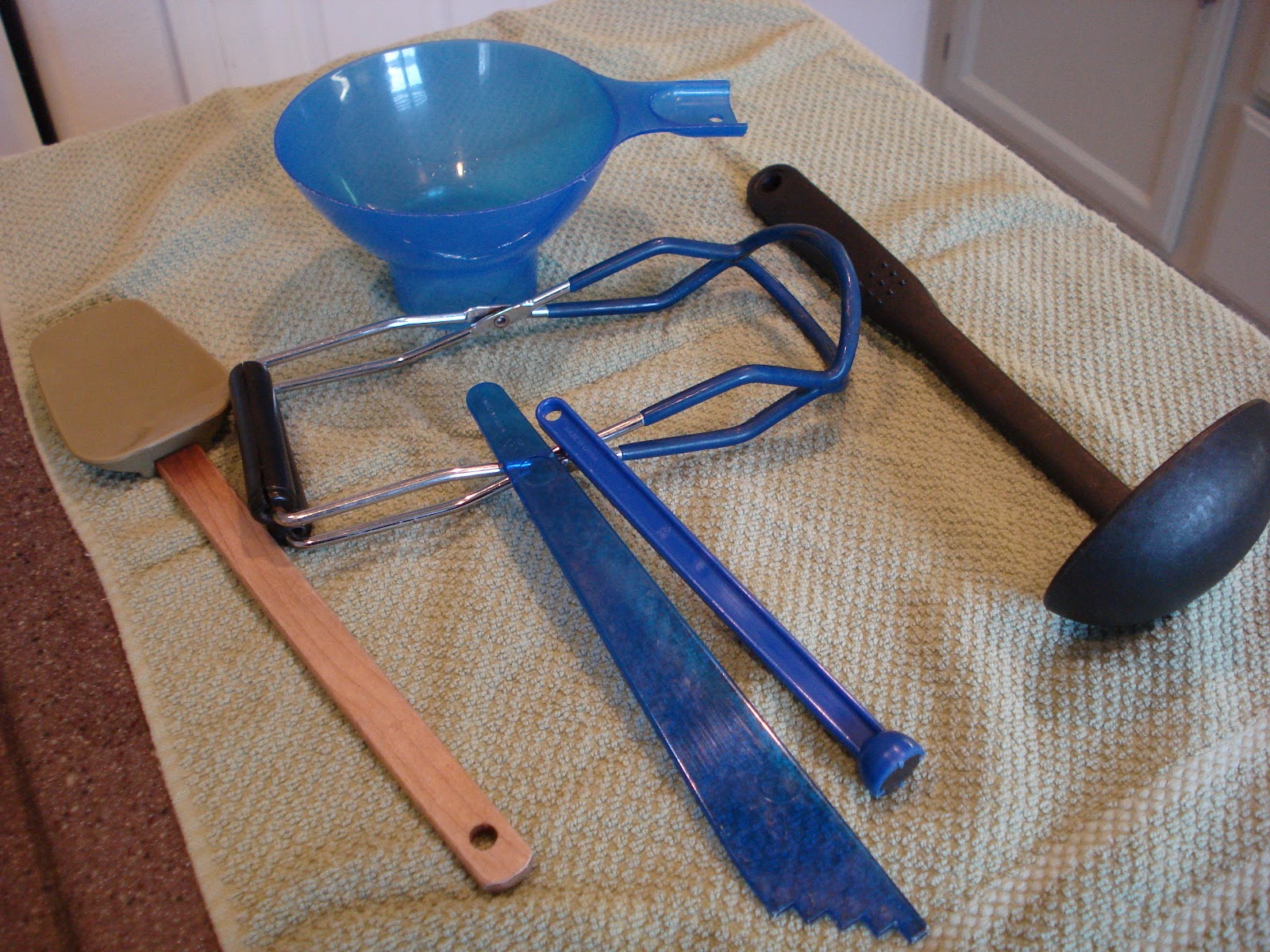
Magic Wand –Lifting Rings from hot water
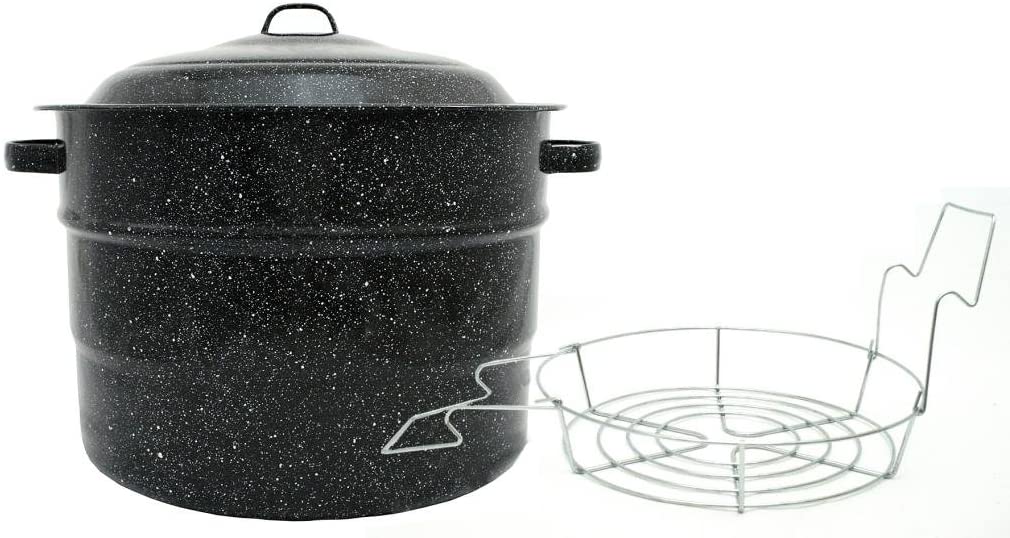 Jar Funnel – Used onJars to ladle food into opening
Jar Funnel – Used onJars to ladle food into opening
Bubble Remover – Remove air and bubbles from filled jars and theother side checks headspace
Ladle, Spatula & Thermometer – Ladle the food into jars, checktemperatures for water, jams/preserves/jellies, and to stir your recipes.
Water Bath Canner – You will also need a canning pot. Waterbath canners are widely available at stores, but you can use any big pot thathas a lid, but it must be deep enough for the water to cover the tops of thecanning jars by 1 to 2 inches inches. You will then want it to be about 2 to 4inches taller since you are boiling the water and don’t want it boiling overand either putting out the flame or making a mess. The pot or canner willneed a wire or wooden rack to fit on the bottom. The jars must sit offthe bottom so the heat can penetrate properly. The rack also helps to keep thedirect heat off the bottom of the jars to prevent cracking or breakage. Acouple examples that people have in their homes may be a tamale pot or a pastapot where there is an insert so that you can set the jars in the pot coveredwith water but not on the bottom.
Now that you know your basic equipment we are ready to gostep by step to process your jars so they will be shelfstable. Getting the prep work done ahead of time and setting up yourtools to make a “canning station” or area is important so that you have everything within reach. Now that we’re Ready…let’s get Set!
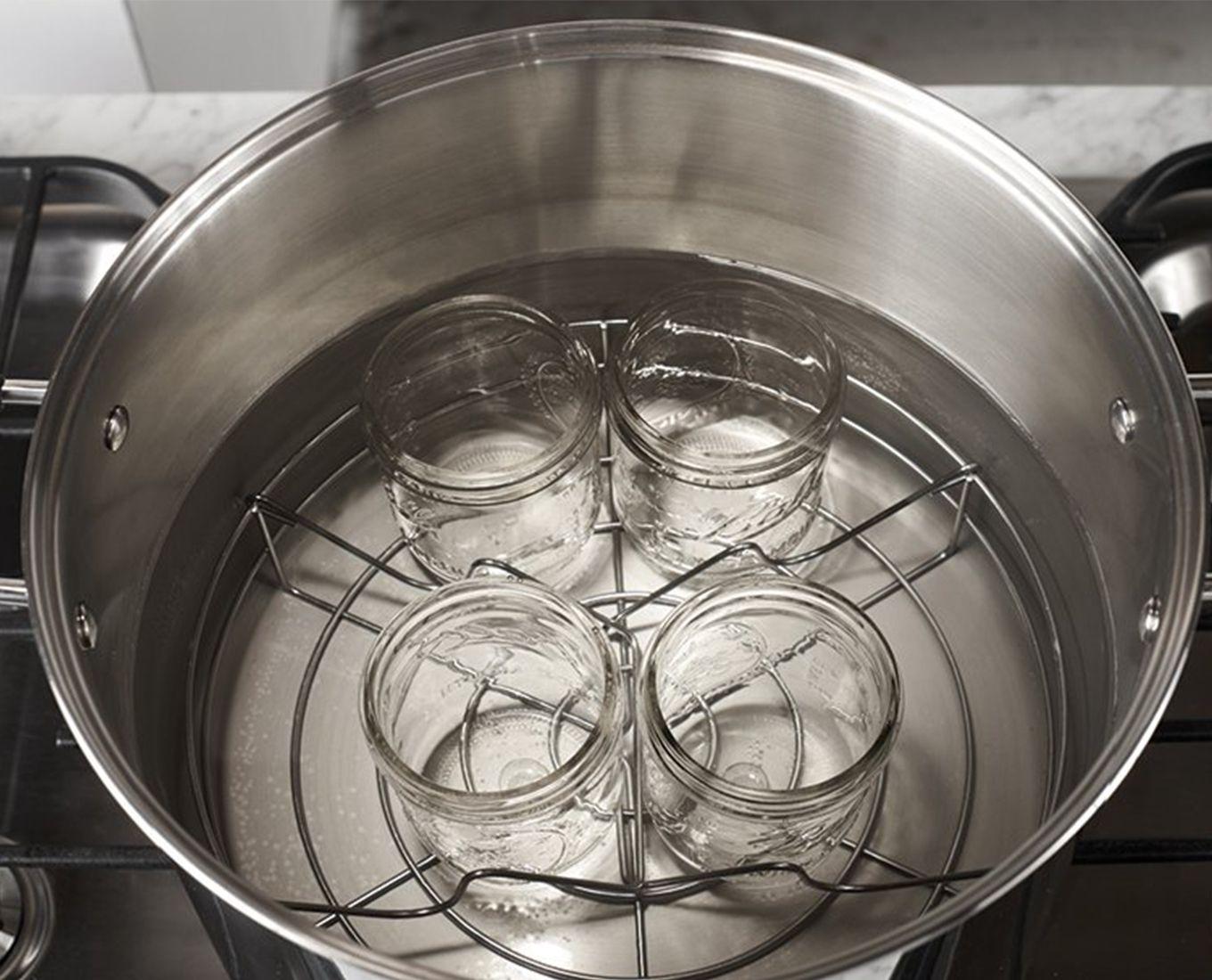
Canning Prep
Prepping your jars is one of the most critical steps indoing canning because you want to have your jars be clean and sterile when youfill them with your food. You also want to make sure that your jars are as hotas possible when ladling in the recipe. Since your recipe or liquid will behot and don’t want to crack the jars if the they are cold.
You can clean and sterilize either by running them through the dishwasher that has a sterilization setting or sterilizing them in the water bath canner. When sterilizing in the canneryou will put the jars in the canner and cover the jars by 1-2 inches and put onthe lid. You will turn up the heat on the stove and once at a boil will leavethem at a boil for 10 minutes. Leave them in the canner or in thedishwasher with the lid on or the door shut till you are ready to fill them.
Prepping your lids is important so that you can soften therubber outer seal so they will adhere to the glass rim of the jar. Jar lidsneed to sit for 10 minutes in hot, previously boiled water.
You will either add the lids to your canning pot after the jars have finished
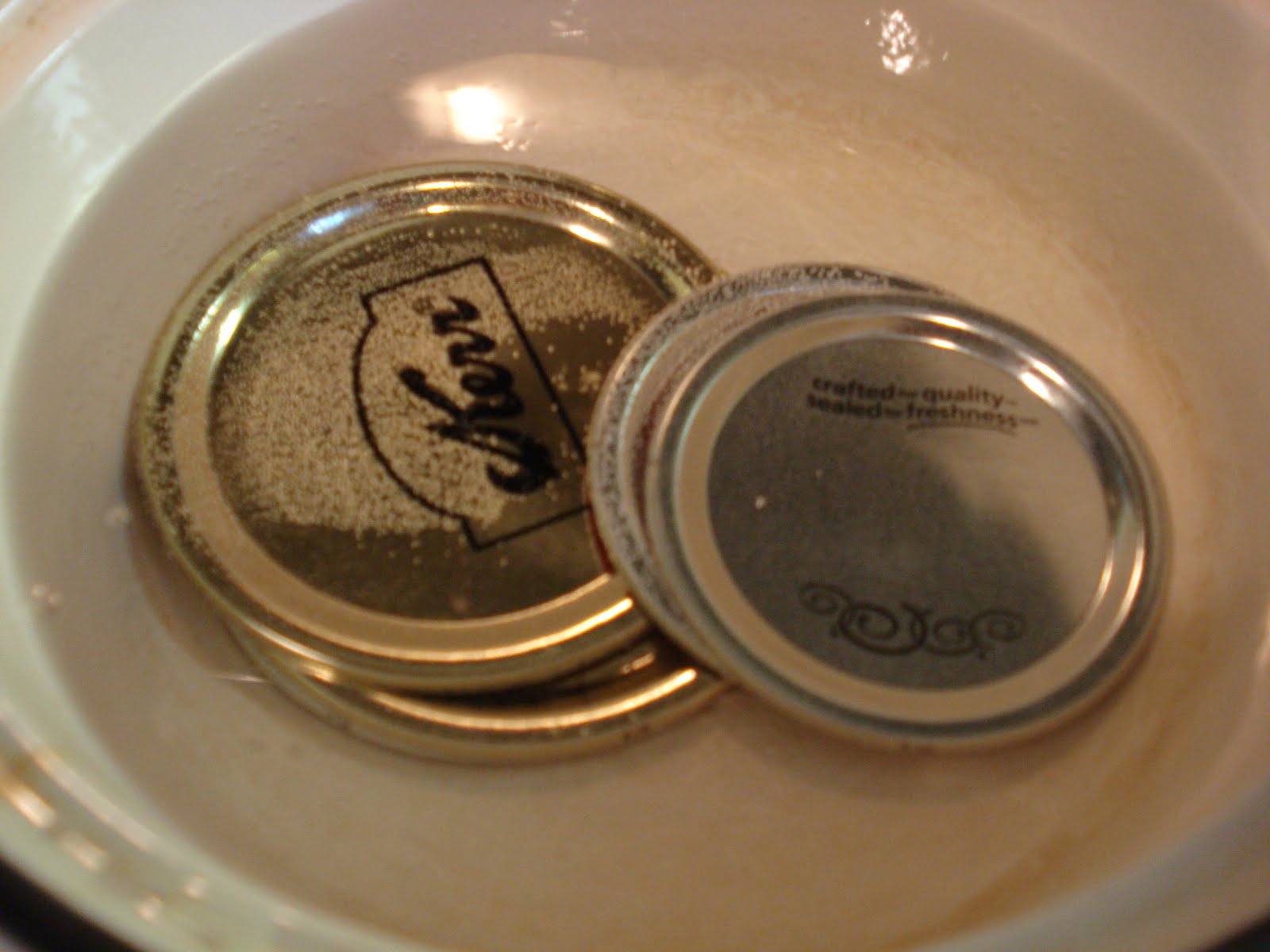
being sterilized or you can boil some water in a small pot on your stove, thenturn it off and add your lids till you are ready to seal the jars. You can putthe lids in the canner and when it’s time you will use your magic wand to fishthem out. It has a magnet on one end that will help you get them out withoutburning yourself. (picture to follow)
Prepping your canning area will help to keep you organized. Using a dishtowel or large towelfind a location close to the stove and lay it out.
This will be your canningstation. You should have your tools above next to the towel. We use a towel tofirst make sure that when we are filling the jars that the jars stay hot. If weplace the jars directly on the counter the counter is cold and it will coolthem too fast. We also use a towel to keep the jars from slipping on the slick counter when they are wet. The towel will also be the final resting place whenthe jars come out of the canner to cool overnight.
Water Bath Processing
When you are ready to fill the jars you will set up your area. Remove the hotjars from the canner or dishwasher and set them on your towel. Using your jarlifter pour out any water in the jar.
Place your funnel on the jar and fill with the recipe. Fill up as close to the designated headspace in the recipe. Headspace is the distance from the top lip of the jar to where the food starts in the jar.
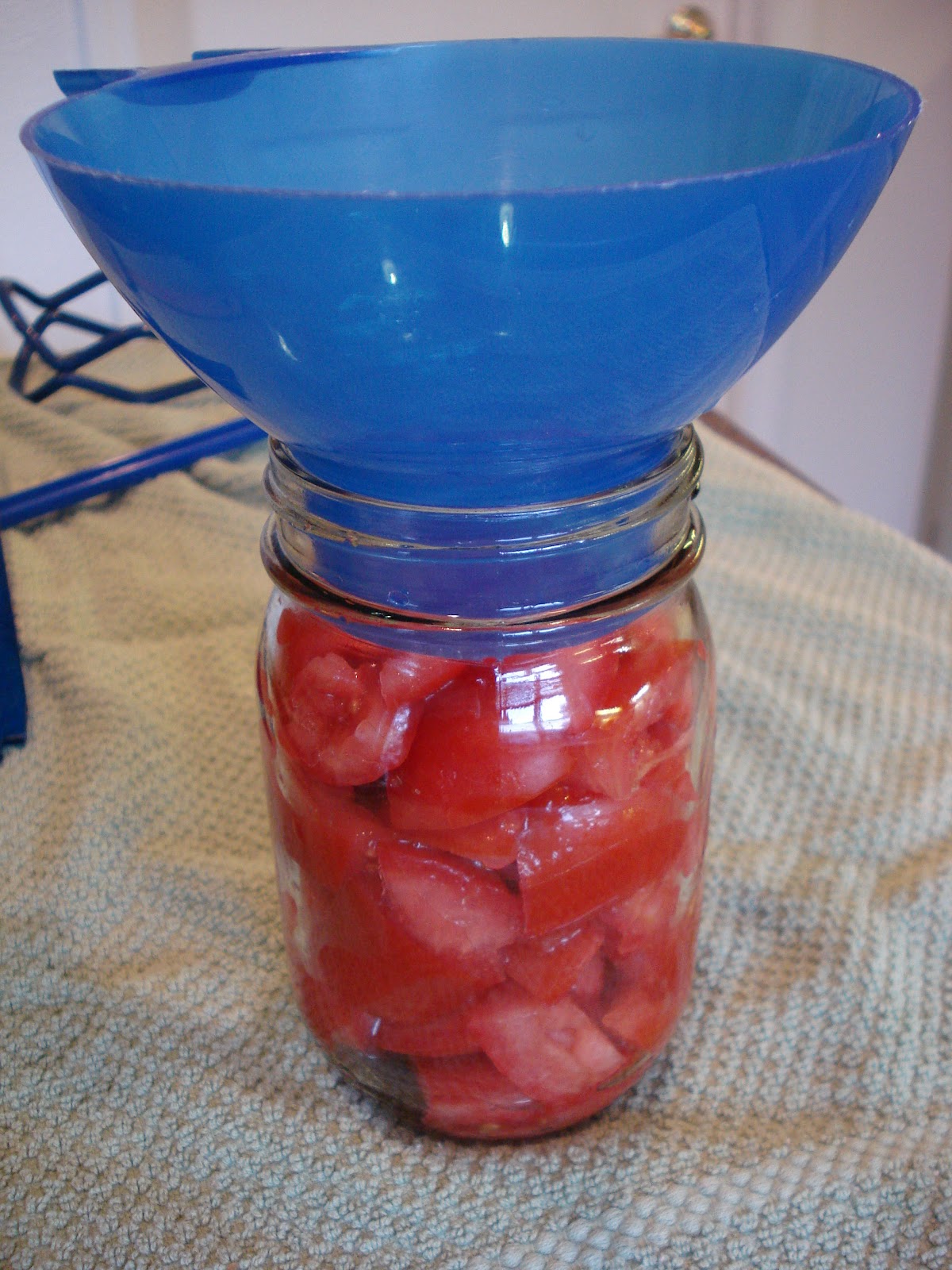
To check your headspace use the “staircase” side of your bubbleremover. Shown below set the proper “stair” on the edge of the jar and measure so that the food touches the bottom of the blue flat area.
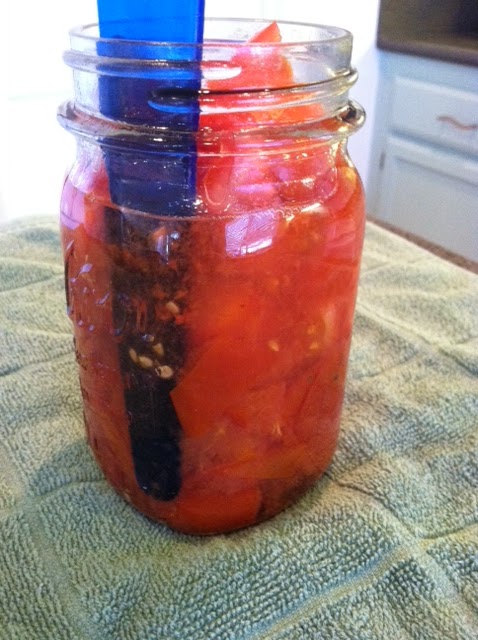
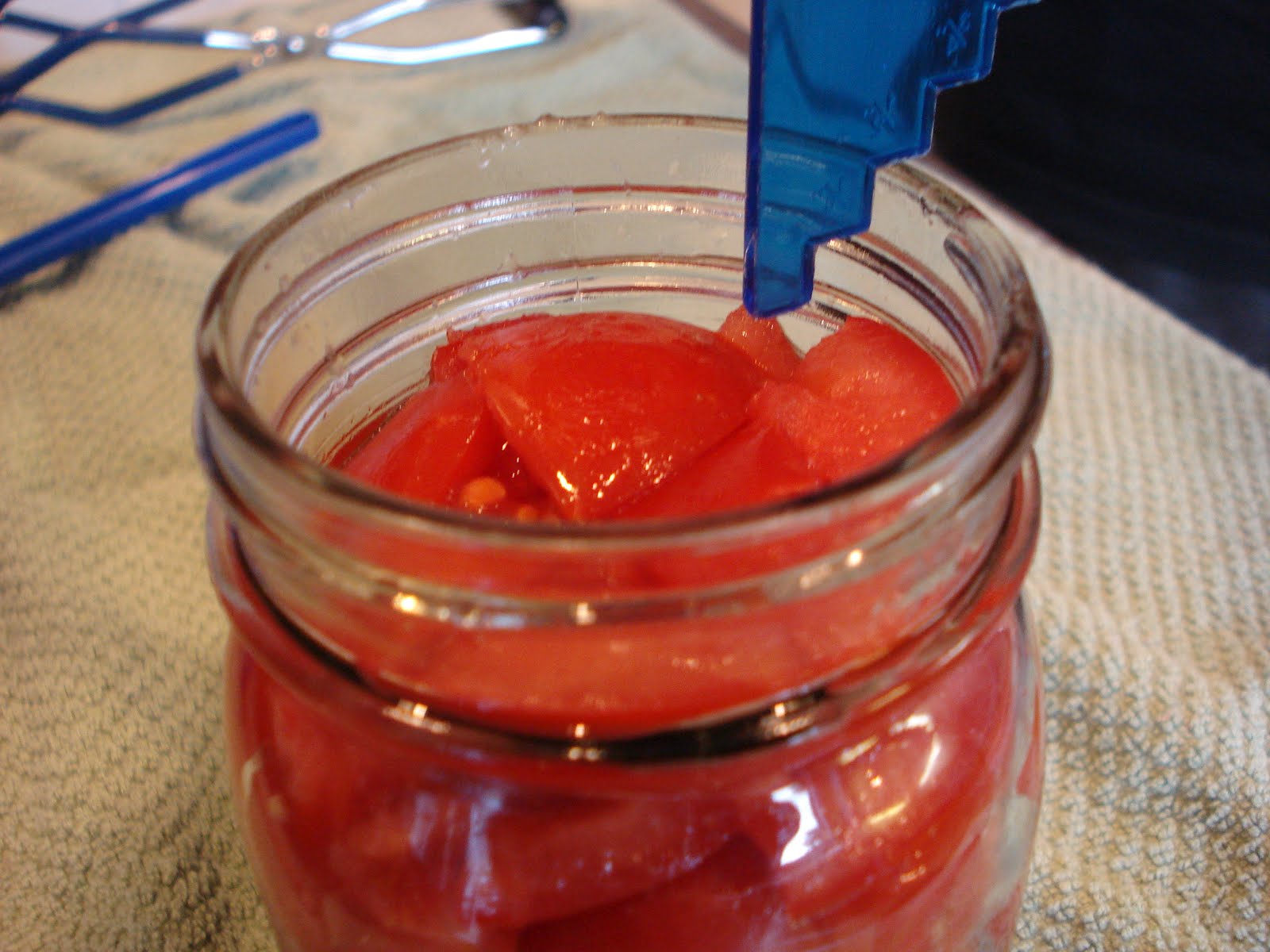
Then using the other side remove the air bubbles by going around theinside of the jar between the glass and the food.
Recheck your headspace and refill to proper measurement if necessary.
Wipe the top rims of the jars with a clean wet paper towel. This will removeany food that might interfere with a good seal once the lid is puton.
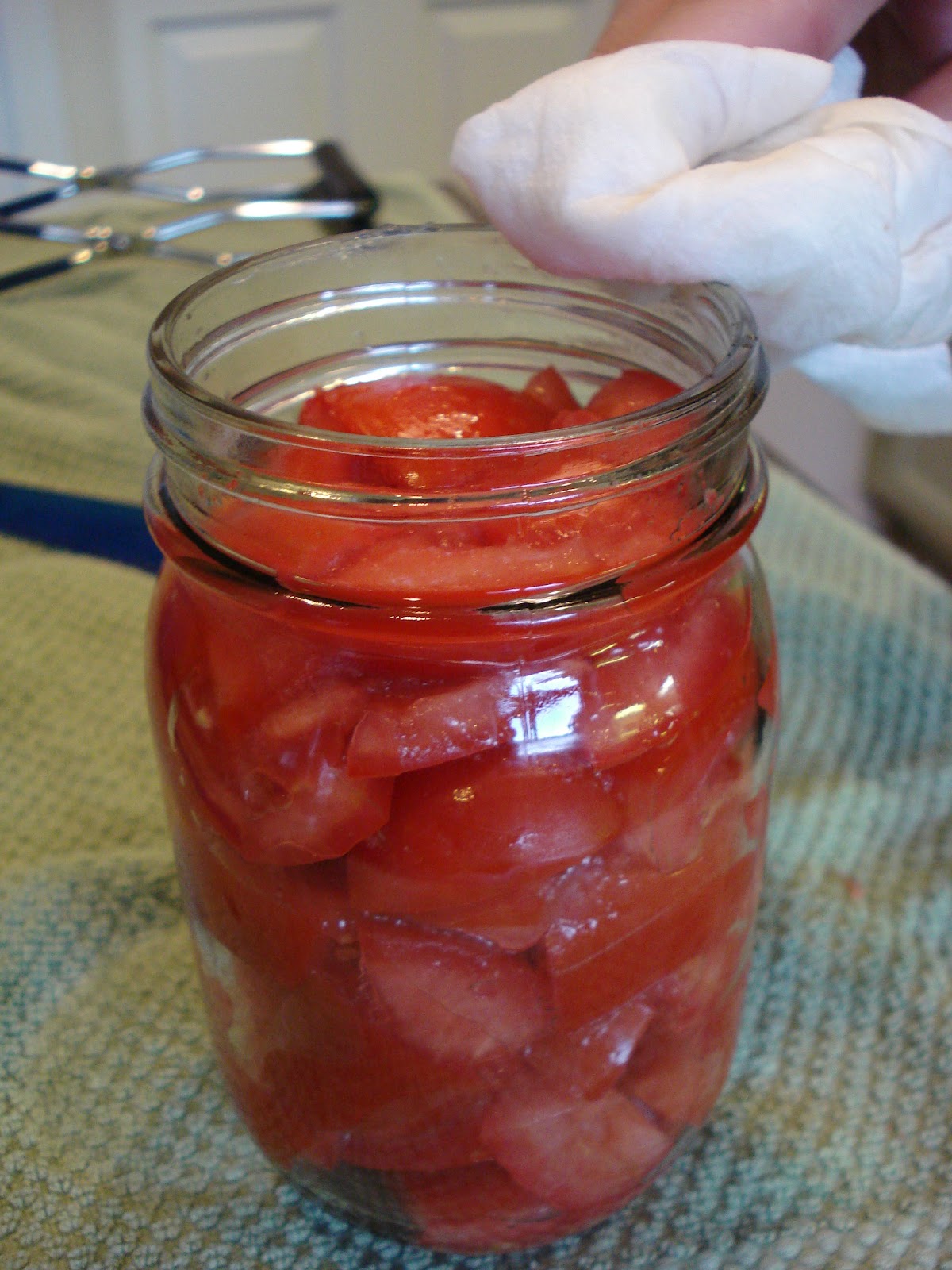
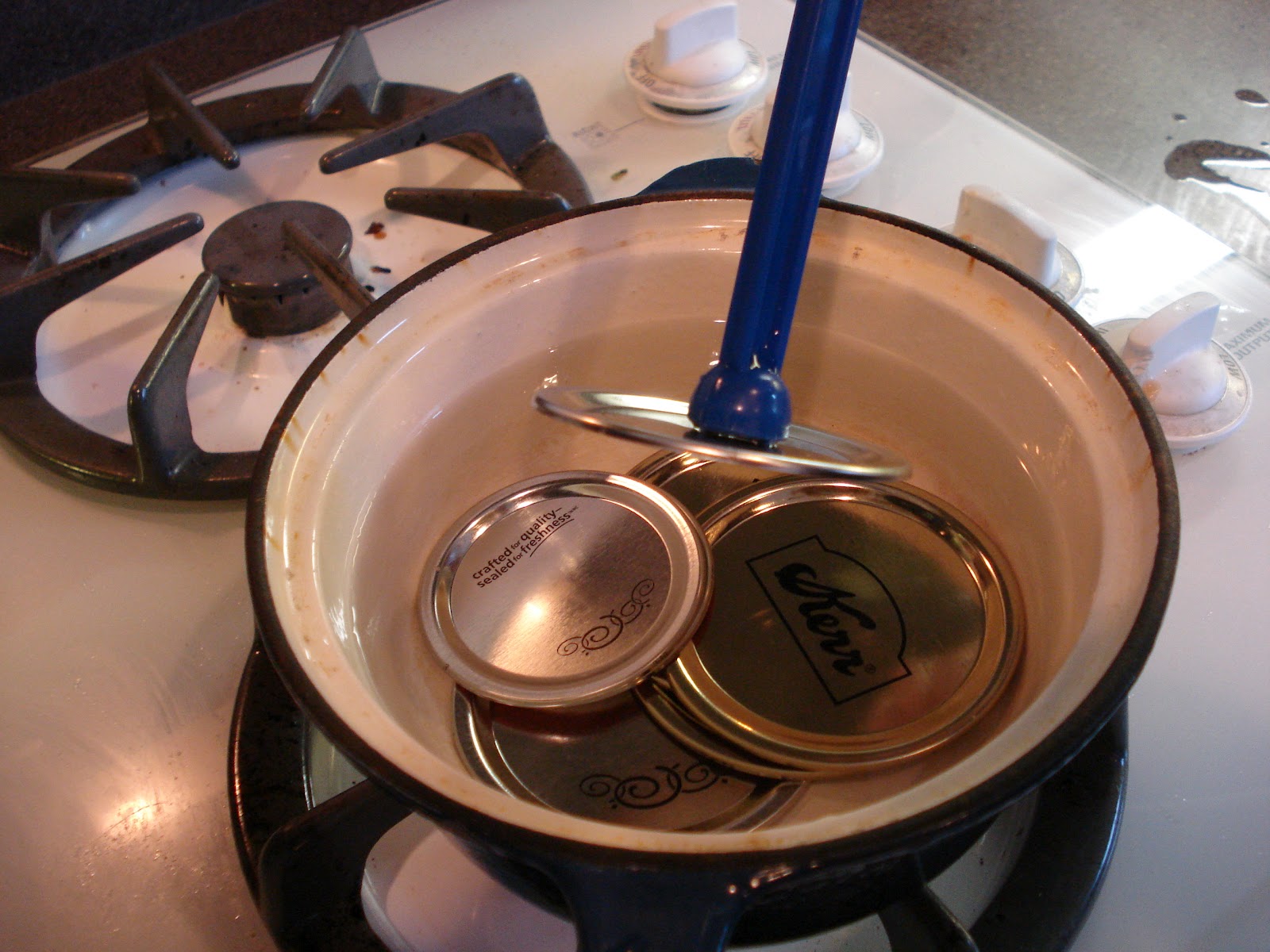
Using your magic wand remove your hot lids from the water one at atime and place them carefully on the center of the jar. Repeat this processtill all the jars have lids. Doing this one at a time will ensure you don’t gettwo lids stuck together.
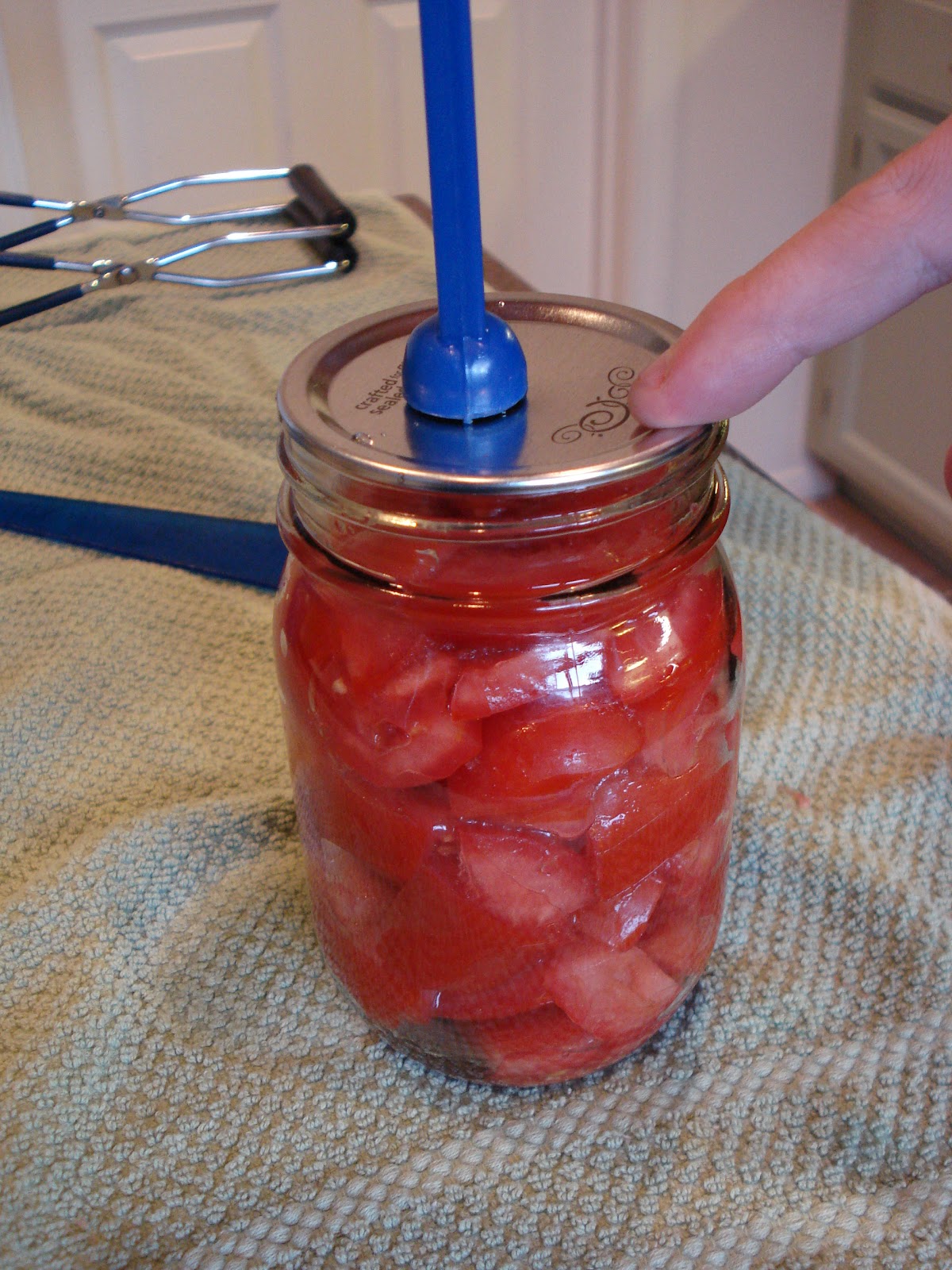
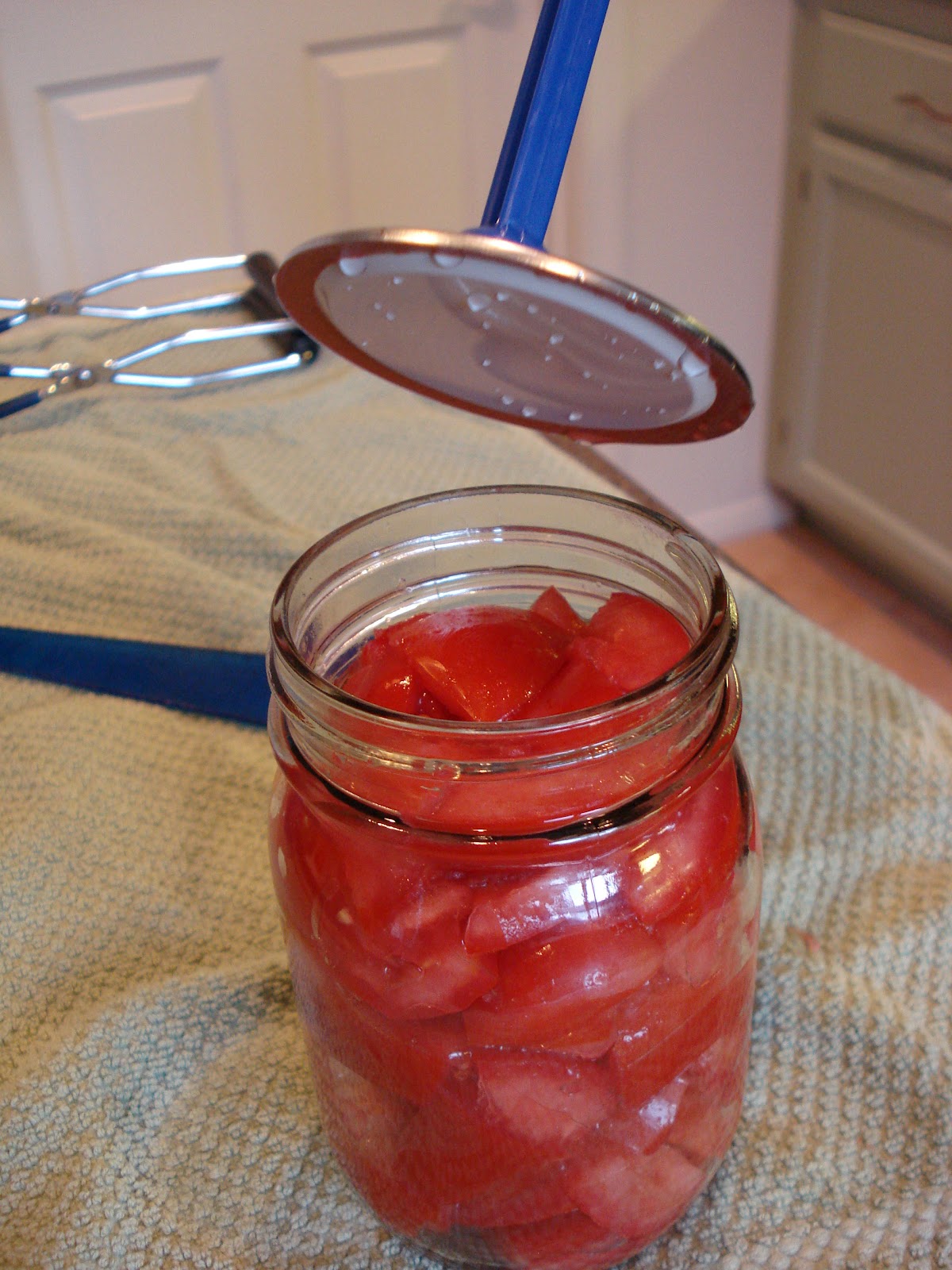
Remember these have been in hot water and will be hot to the touch. Use thewand and your fingertip to release the lid from the magnet.
Add your rings, which do not have to be hot, by turning them on the threads ofthe jars. You will only turn them till they are finger tip tight. As you can see in the picture only tighten as much as you can with only yourfinger tips till you can’t turn anymore or have resistance.
If you over tighten by using your whole hand the lid may bend during canning while the air is trying to evacuate and the jar may not seal properly.
Goal: Water Bath canning is done so that you can heat the contents of thejars to 212 degrees (boiling water) and kill the bacteria and microorganisms inside the jar. At the same time drive out the air in the headspace allowing the jar lidsto compress and seal. What you will be left with is a jar that is airtight andfree of bacteria that can’t grow inside the jar.
Now you will return your jars to the water bath using your jar lifter. The water will be at a simmer but not boiling. Place the jars, without tilting them in the canner making sure that the rack is on thebottom.
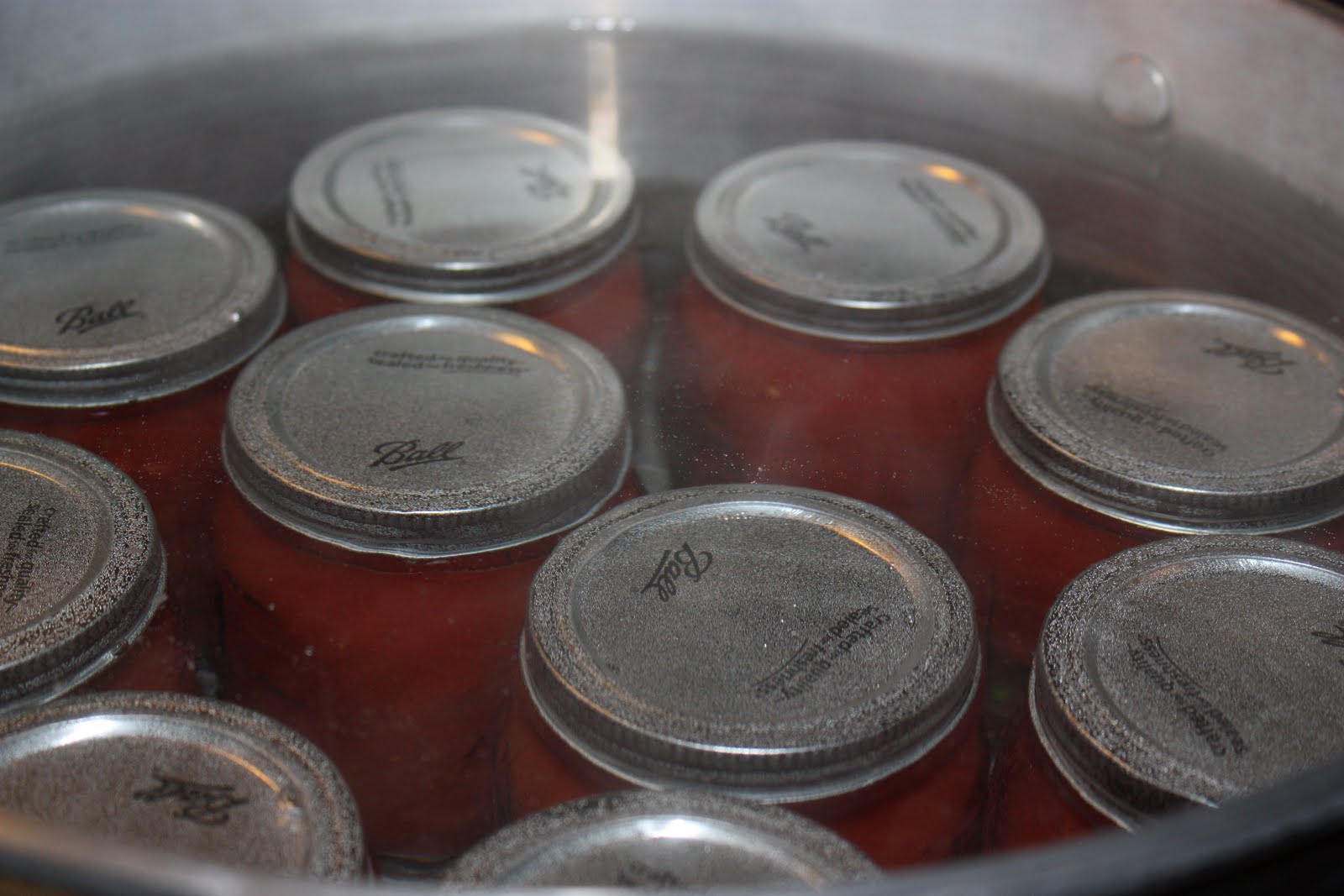
You will want to make sure after all the jars are loaded that the wateris 1 to 2 inches over the top of the tallest jar before you start heating thewater again. If the water is not high enough add hot water to the canner.
Putthe lid on the canner or pot and crank up the heat.
When you see or hear the water is at a boil start your timer for the amountstated in the recipe. Continue to let the water boil rapidly while you are timing. When the time isup, turn off the heat, take off the lid, and leave the jars in the canner for an additional 5minutes.
Using your jar lifter remove the jars and place them on a towelwithout tipping or tilting them. If there is water on the lid leave itthere. It will evaporate or you can gently wipe it with the papertowel once thejars have sealed. You will want to keep them out of a draft so they will cool gradually. Leave them undisturbed on that towel overnight somake sure this location is someplace that you don’t need to move them. Neverturn your jars upside down!
During the next few minutes, several hours or overnight the jars will seal. You may hear a “pinging” noise that willindicate that lid has sealed to the jar. Your jars may also seal as you aretaking them out of the canner. That is fine as well. The jars will seal as theycool so many jars may take time if the area around them is hot or the jars areclustered together.
Checking for the Seal the next day:
To make sure that the seal has been made put your fingeron the lid in the center and gently push down and see if you have anyresistance or the lid pushes back. If it’s solid or the “button”(some lids) is depressed then the lid is sealed. If you feel resistanceor the button is up then you need to put that jar into the fridge toeat. Do not put an unsealed jar in your pantry. This jar is not shelf stable butthe contents are still edible if you put it in the refrigerator to eat first.
Cleaning up the jars: Now that your jars have seal you will want to remove thering and with a warm damp cloth clean up around the lid and threads of the jar.This will help deter ants in your pantry or other pests. Once the jarrings are off, leave them off for storage. To read more about why we leave therings off..see Storing your Canning jars – Do’s and Don’ts
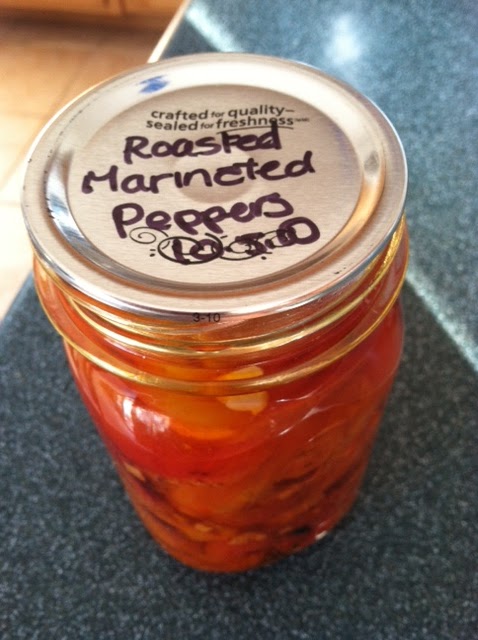
Labeling: Now that you have cleaned up the jars you will want to label your jars.Labeling is important since you will want to know what recipe is inside and thedate that you canned it. Since the food in the jars will be at the optimalfreshness for one year you will need to know when you canned it. With a Sharpiemarker or sticker label write the recipe name and date of canning.
Storing your jars: To store your jars choose a location that is dark, cool, anddry with the optimal temperature between 50 and 70 degrees.
Final notes: This process and method takes a few times to perfect. Each recipewill be different but the procedures of how you ready your jars and processthem for water bath canning will be the same. Be extra careful since you areworking with water that is 212 degrees and you can burn yourself if you are notpaying attention.
Take pictures and/or keep a canning journal so that you can remember recipesthat you liked the taste and flavor and how many jars you made so that thefollowing year you can plan for more if the jars were so good they didn’t lastvery long.



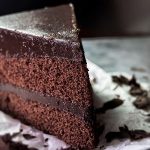


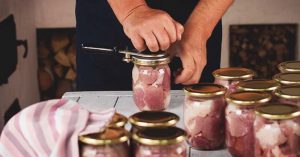
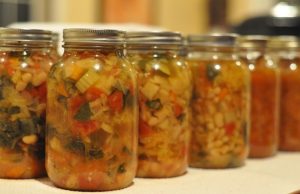
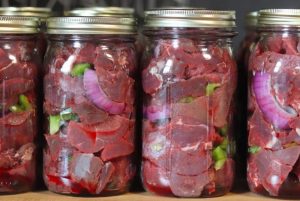
Leave a Reply